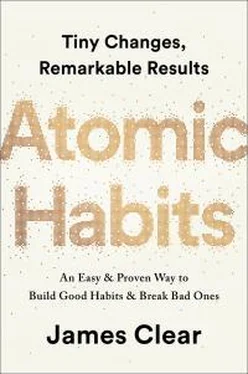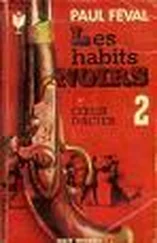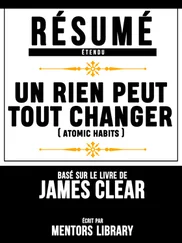Whether we are approaching behavior change as an individual, a parent, a coach, or a leader, we should ask ourselves the same question: “How can we design a world where it’s easy to do what’s right?” Redesign your life so the actions that matter most are also the actions that are easiest to do.
Chapter Summary
Human behavior follows the Law of Least Effort. We will naturally gravitate toward the option that requires the least amount of work.
Create an environment where doing the right thing is as easy as possible.
Reduce the friction associated with good behaviors. When friction is low, habits are easy.
Increase the friction associated with bad behaviors. When friction is high, habits are difficult.
Prime your environment to make future actions easier.
13 How to Stop Procrastinating by Using the Two-Minute Rule
TWYLA THARP IS widely regarded as one of the greatest dancers and choreographers of the modern era. In 1992, she was awarded a MacArthur Fellowship, often referred to as the Genius Grant, and she has spent the bulk of her career touring the globe to perform her original works. She also credits much of her success to simple daily habits.
“I begin each day of my life with a ritual,” she writes. “I wake up at 5:30 A.M., put on my workout clothes, my leg warmers, my sweat shirt, and my hat. I walk outside my Manhattan home, hail a taxi, and tell the driver to take me to the Pumping Iron gym at 91st Street and First Avenue, where I work out for two hours.
“The ritual is not the stretching and weight training I put my body through each morning at the gym; the ritual is the cab. The moment I tell the driver where to go I have completed the ritual.
“It’s a simple act, but doing it the same way each morning habitualizes it—makes it repeatable, easy to do. It reduces the chance that I would skip it or do it differently. It is one more item in my arsenal of routines, and one less thing to think about.”
Hailing a cab each morning may be a tiny action, but it is a splendid example of the 3rd Law of Behavior Change.
Researchers estimate that 40 to 50 percent of our actions on any given day are done out of habit. This is already a substantial percentage, but the true influence of your habits is even greater than these numbers suggest. Habits are automatic choices that influence the conscious decisions that follow. Yes, a habit can be completed in just a few seconds, but it can also shape the actions that you take for minutes or hours afterward.
Habits are like the entrance ramp to a highway. They lead you down a path and, before you know it, you’re speeding toward the next behavior. It seems to be easier to continue what you are already doing than to start doing something different. You sit through a bad movie for two hours. You keep snacking even when you’re already full. You check your phone for “just a second” and soon you have spent twenty minutes staring at the screen. In this way, the habits you follow without thinking often determine the choices you make when you are thinking.
Each evening, there is a tiny moment—usually around 5:15 p.m.—that shapes the rest of my night. My wife walks in the door from work and either we change into our workout clothes and head to the gym or we crash onto the couch, order Indian food, and watch The Office .* Similar to Twyla Tharp hailing the cab, the ritual is changing into my workout clothes. If I change clothes, I know the workout will happen. Everything that follows—driving to the gym, deciding which exercises to do, stepping under the bar—is easy once I’ve taken the first step.
Every day, there are a handful of moments that deliver an outsized impact. I refer to these little choices as decisive moments . The moment you decide between ordering takeout or cooking dinner. The moment you choose between driving your car or riding your bike. The moment you decide between starting your homework or grabbing the video game controller. These choices are a fork in the road.
DECISIVE MOMENTS
FIGURE 14: The difference between a good day and a bad day is often a few productive and healthy choices made at decisive moments. Each one is like a fork in the road, and these choices stack up throughout the day and can ultimately lead to very different outcomes.
Decisive moments set the options available to your future self. For instance, walking into a restaurant is a decisive moment because it determines what you’ll be eating for lunch. Technically, you are in control of what you order, but in a larger sense, you can only order an item if it is on the menu. If you walk into a steakhouse, you can get a sirloin or a rib eye, but not sushi. Your options are constrained by what’s available. They are shaped by the first choice.
We are limited by where our habits lead us. This is why mastering the decisive moments throughout your day is so important. Each day is made up of many moments, but it is really a few habitual choices that determine the path you take. These little choices stack up, each one setting the trajectory for how you spend the next chunk of time.
Habits are the entry point, not the end point. They are the cab, not the gym.
THE TWO-MINUTE RULE
Even when you know you should start small, it’s easy to start too big. When you dream about making a change, excitement inevitably takes over and you end up trying to do too much too soon. The most effective way I know to counteract this tendency is to use the Two-Minute Rule , which states, “When you start a new habit, it should take less than two minutes to do.”
You’ll find that nearly any habit can be scaled down into a two-minute version:
“Read before bed each night” becomes “Read one page.”
“Do thirty minutes of yoga” becomes “Take out my yoga mat.”
“Study for class” becomes “Open my notes.”
“Fold the laundry” becomes “Fold one pair of socks.”
“Run three miles” becomes “Tie my running shoes.”
The idea is to make your habits as easy as possible to start. Anyone can meditate for one minute, read one page, or put one item of clothing away. And, as we have just discussed, this is a powerful strategy because once you’ve started doing the right thing, it is much easier to continue doing it. A new habit should not feel like a challenge. The actions that follow can be challenging, but the first two minutes should be easy. What you want is a “gateway habit” that naturally leads you down a more productive path.
You can usually figure out the gateway habits that will lead to your desired outcome by mapping out your goals on a scale from “very easy” to “very hard.” For instance, running a marathon is very hard. Running a 5K is hard. Walking ten thousand steps is moderately difficult. Walking ten minutes is easy. And putting on your running shoes is very easy. Your goal might be to run a marathon, but your gateway habit is to put on your running shoes. That’s how you follow the Two-Minute Rule.
Very easy
Easy
Moderate
Hard
Very hard
Put on your running shoes
Walk ten minutes
Walk ten thousand steps
Run a 5K
Run a marathon
Write one sentence
Write one paragraph
Write one thousand words
Write a five-thousand-word article
Write a book
Open your notes
Study for ten minutes
Study for three hours
Get straight A’s
Earn a PhD
People often think it’s weird to get hyped about reading one page or meditating for one minute or making one sales call. But the point is not to do one thing. The point is to master the habit of showing up. The truth is, a habit must be established before it can be improved. If you can’t learn the basic skill of showing up, then you have little hope of mastering the finer details. Instead of trying to engineer a perfect habit from the start, do the easy thing on a more consistent basis. You have to standardize before you can optimize.
Читать дальше




![Джеймс Клир - Атомные привычки [Как приобрести хорошие привычки и избавиться от плохих]](/books/403243/dzhejms-klir-atomnye-privychki-kak-priobresti-horosh-thumb.webp)



